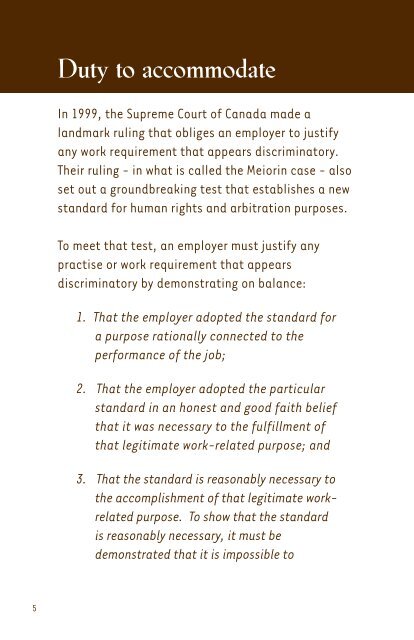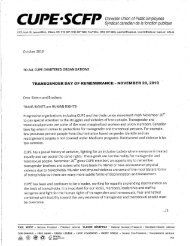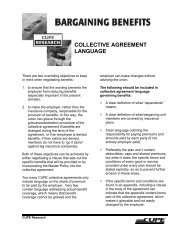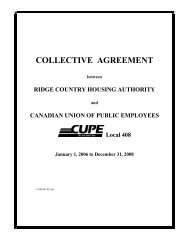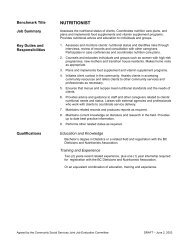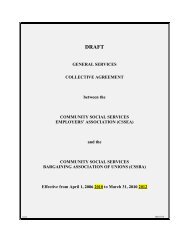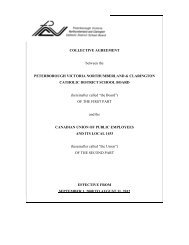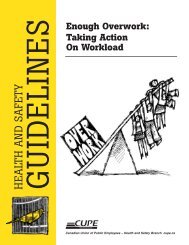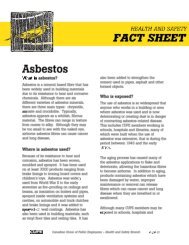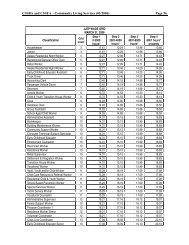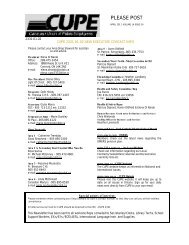Disability rights in the workplace - Canadian Union of Public ...
Disability rights in the workplace - Canadian Union of Public ...
Disability rights in the workplace - Canadian Union of Public ...
Create successful ePaper yourself
Turn your PDF publications into a flip-book with our unique Google optimized e-Paper software.
Duty to accommodate<br />
In 1999, <strong>the</strong> Supreme Court <strong>of</strong> Canada made a<br />
landmark rul<strong>in</strong>g that obliges an employer to justify<br />
any work requirement that appears discrim<strong>in</strong>atory.<br />
Their rul<strong>in</strong>g - <strong>in</strong> what is called <strong>the</strong> Meior<strong>in</strong> case - also<br />
set out a groundbreak<strong>in</strong>g test that establishes a new<br />
standard for human <strong>rights</strong> and arbitration purposes.<br />
To meet that test, an employer must justify any<br />
practise or work requirement that appears<br />
discrim<strong>in</strong>atory by demonstrat<strong>in</strong>g on balance:<br />
1. That <strong>the</strong> employer adopted <strong>the</strong> standard for<br />
a purpose rationally connected to <strong>the</strong><br />
performance <strong>of</strong> <strong>the</strong> job;<br />
2. That <strong>the</strong> employer adopted <strong>the</strong> particular<br />
standard <strong>in</strong> an honest and good faith belief<br />
that it was necessary to <strong>the</strong> fulfillment <strong>of</strong><br />
that legitimate work-related purpose; and<br />
3. That <strong>the</strong> standard is reasonably necessary to<br />
<strong>the</strong> accomplishment <strong>of</strong> that legitimate workrelated<br />
purpose. To show that <strong>the</strong> standard<br />
is reasonably necessary, it must be<br />
demonstrated that it is impossible to<br />
5


